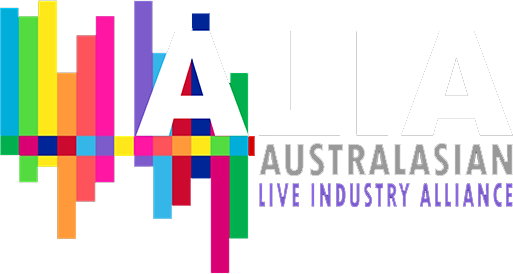





 Jackson Scandrett Discusses PA, control and the Front of House set-up
Jackson Scandrett Discusses PA, control and the Front of House set-up
Moulin Rouge is one of the largest musical theatre shows that System Sound has worked on and not necessarily by mass or by sheer speaker count – it goes beyond that. By speaker count, there’s something in the order of 240, but that said, it also comes down to the sheer amount of channels, audio protocols, networks, processing and so on.
The PA itself is, as previously mentioned, mainly a Meyer Sound system, with 14 Leopards per side acting as a powerful main PA. Each side also has a hang of six LFC900 18” subs from Meyer Sound with more of these units located throughout the venue. The centre speaker array is comprised of a combination of Meyer UPQs; the ultra-wide throw UPQ-D3 speakers act as downfill with the tighter coverage UPQ-D2s performing a similar role but firing further back into the house, the downspeakers.
Infills in the stall area are Meyer Sounds new X40s and on the dress circle level, there are UPM-1Ps firing in and upwards from the exit doors to improve coverage over that tricky area. The equally tricky area for coverage is the passerelle cabaret-style seating in front of the stage. The stage itself is fully built over the area usually used as an orchestra pit and extends out into the house in a T-shaped performance space. Around that are six tables where audience members have a unique experience well and truly within the performance space. That said seating area presents some challenges for coverage so a really neat feature has been added in the form of K Array Lyzard speaker units built into the lamps on each table for intelligibility, neatly hidden behind the tussles incorporated into the lamp design. Narrow coverage speakers also service this area, extending from the PA itself and this well and truly ensures that no element of the sound design is lost in an otherwise difficult layout.
The front-fill and stage speakers are sixty of Meyer’s compact MM4s. Thirty MM4XP front-fills span the length of the stage whilst 32 MM4s are built into the stage, thoroughly covering all areas and are all discretely fed accordingly depending on the scene and the requirements of the performance. Eight UP Juniors act as flown wing monitors. Stage foldback is well and truly covered from every angle.
Naturally, what also makes up a large portion of the total speaker count is also the surround system, with over 56 d&b E8s adorning the walls and even mounted on the rear side of delay units in the stalls. Passive speakers like d&b’s E8s and E5s make a great solution for vast cable runs and where weight is a concern because they offer substantial SPL, lightweight and of course the bespoke cable lengths can be made to measure for the venue.
Now to the front of house!
The choice of mixing console for Moulin Rouge Australia has been Digico’s new flagship, the Quantum 7 with extension unit. The setup features reverb units, each designated to a particular group. Vocals are processed through a TC6000 with two Bricasti M7 reverb units in use on the band. The set-up also features three vintage TC Electronic D2 Tap units. The FOH system uses an outboard Waves SoundGrid Extreme. Orange Box DMI interfaces provide a connection to the QLAB system in use on the show.
The Digico FOH run is optical to three rack units which have all been fitted with Stadius 32-bit input cards to maintain the highest possible audio quality and signal depth into the console. These racks connect with the Sennheiser Digital radio rack on stage and with the band racks in the band room. Analogue outputs are used to connect to the show’s 11 Meyer Sound Galaxy units which handle all system processing and delays with their cross-point matrices. Milan certified AVB is the audio protocol linking these units which makes up one of the five audio protocols operative in the system.
The ten time zones around the stage and beyond form those specific delays required for the performance scene by scene and are regulated by the Meyer Galaxies in unison with the SD7Q via the AVB network. Having so many audio protocols certainly makes for a unique element of this system; DANTE connects the wireless tuning system, a Lectrosonics product, MADI is the exchange between the band and Ableton racks, optical is the multi between FOH and the backstage racks, Roland’s proprietary audio network feeds the foldback system and AVB on the Meyer products. If you wanted to be exhaustive about the whole thing you could include the audio via SDI!
Next week we’ll cover the band set up, comms and radios.
Company – Global Creatures
CEO & Producer – Carmen Pavlovich
Head of Production – Angela Dalton
Sound Designer – Peter Hylenski
Associate – Simon Matthews
Australian Associate Sound Designer – David Greasley
Head of Department – Christopher Pratt
Deputy – Louise Daley
Head of Radio Mics – Courtney Weaver
Production Sound Engineer – David Letch
![]() Michelle Grace Hunder
Michelle Grace Hunder




















































